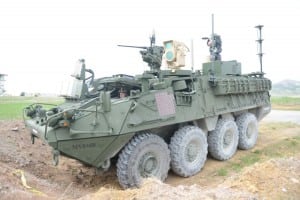
The Army is increasingly concerned with the prevalence of weaponized unmanned aerial systems (UAS), which both near-peer and non-state adversaries have demonstrated to great effect in recent conflicts.One of the most promising counter-UAS technologies recently demonstrated the ability to shoot down several dozen small drones without firing a single bullet or missile. At the most recent Mobile Fires Integrated Experiment (MFIX), the Army fielded a 5kW version of the Mobile High-Energy Laser (MEHEL) aboard a Stryker wheeled combat vehicle.Army Capt.…

 By
By 











